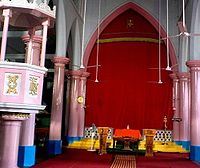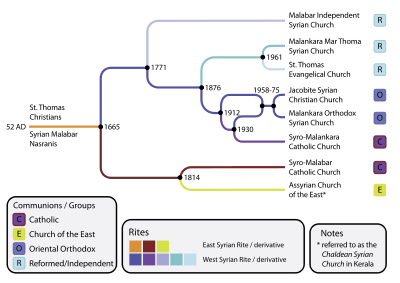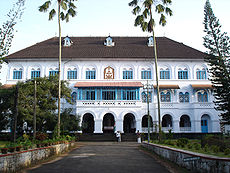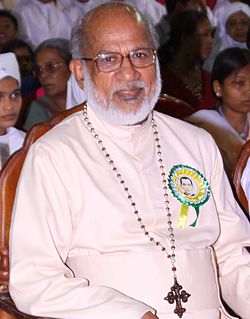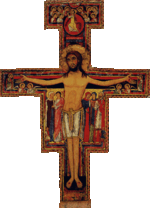- Syro-Malabar Catholic Church
-
Syro Malabar Catholic Church Total population 3.8 million[1] Founder St. Thomas the Apostle Regions with significant populations Religions Roman Catholicism Scriptures Bible Languages Vernacular:
Malayalam, English
Liturgical:
Syriac, Malayalam, EnglishThe Syro-Malabar Catholic Church in India is an East Syrian Rite, Major Archiepiscopal Church in full communion with the Catholic Church. It is one of the 22 sui iuris Eastern Catholic Churches in the Catholic Church. It is the largest of the Saint Thomas Christian denominations with more than 3.6 million believers.[1] It is also the second largest Eastern Catholic Church in communion with the Bishop of Rome.[2]
The church is headed by the Major Archbishop of Ernakulam-Angamaly, Mar George Alencherry the Patriarch and Gate of All India.[3] Saint Alphonsa is the first saint from within the Church. The members of the Church are locally known as Surianis or Syrian Catholics or Roman Catholic Syrian Christians (RCSC).
Part of a series on Christianity
in India
Background People - St. Thomas the Apostle
- St. Francis Xavier
- St. Gonsalo Garcia
- Devasahayam Pillai
- St. Alphonsa Muttathupadam
- Thomas of Cana
- Mother Teresa
- Palackal Thoma Malpan
- Mar Augustine Kandathil
- Mar Sapor and Prodh
- Marthoma Metrans
- St. Gregorios of Parumala
- St. Baselios Eldho
- Fr. Kuriakose Elias Chavara
- Fr. Varghese Payapilly Palakkappilly
- Mgr. Joseph C. Panjikaran
- William Carey
Churches - St. Thomas Christians:
- Malankara (historical)
- Chaldean Syrian
- Jacobite Syrian
- Malankara Orthodox Syrian
- Malabar Independent Syrian
- Mar Thoma
- St. Thomas Evangelical
- Syro-Malabar Catholic
- Syro-Malankara Catholic
- Latin Rite:
- Latin Catholic
- Protestant denominations:
- Andhra Evangelical Lutheran
- Church of North India
- Church of South India
- Garo Baptist
- Pentecostal Church of God
- North Bank Baptist Christian
- Northern Evangelical Lutheran
- Presbyterian
- The Pentecostal Mission
- Seventh-day Adventist
- True Jesus
- United Evangelical Lutheran
Indian Christianity portal History
Origin of St. Thomas Christians
It is believed that St. Thomas the Apostle landed at Kodungalloor (Muziris) in 52 A.D. St. Thomas is said to have preached and established Christian communities in different parts of India and he died at Mylapur in 72 A.D.[4] It is also believed that St. Thomas founded seven churches or communities in Kerala; at Kodungalloor, Niranam, Kollam, Chayal, Kottakkavu, Kokkamangalam and Palayoor.[5]
East Syrian relationship
A Syro-Malabar Catholic Church in Kerala, with the Holy of Holies containing the Saint Thomas Cross veiled by a red curtain according to Eastern Christian practice.
From early centuries the Church of St. Thomas Christians came into communication with the Christian communities that came to be known as East Syrian Church.[6] This relationship made the St. Thomas Christians share the liturgical, spiritual and other ecclesiastical traditions with the East Syrian Church (therefore they are grouped under Chaldean Rite). The Christians of St. Thomas kept their distinctive character especially in Church administration and socio-cultural and ascetic- spiritual life.[7] At least from the 4th century until the end of the 16th century the Bishops of the Church of Malabar were sent from the East Syrian Church[citation needed], appointed by the Patriarch of the East Syrian Church.[8] While the bishops originally hailing from Persia who arrived here were placed in charge of liturgy[citation needed], the administration of the church remained under the control of the local Archdeacon, who was also the head of the local community.[7]
The bishops who came from the East Syrian Church, were concerned with spiritual matters. Essentially, the Thomas Christians followed three distinct ways of activity in their religious sphere: their liturgy was of East Syrian Church:their culture was purely Indian:they had their own style of life. The governance of the Church was through Palliyogam, Synod, etc. as was prevalent in Oriental Churches.[9]
Arrival of Portuguese in Malabar
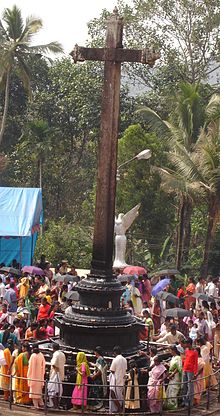 Open Air Rock Cross also called Nazraney Sthambams in front of the 3rd Century built Martha Mariam Catholic Church at Kuravilangadu, Kerala
Open Air Rock Cross also called Nazraney Sthambams in front of the 3rd Century built Martha Mariam Catholic Church at Kuravilangadu, Kerala
The Syro-Malabar Catholic Archdiocese of Thrissur was the first Catholic diocese of India, formed through a special proclamation of the then Pope Leo XIII in May 1887.[10] The Portuguese Admiral Vasco da Gama landed at Calicut on 20 May 1498.[11] When he and the Portuguese missionaries arrived they found no Christians in the country except in Malabar. The Christians they found were St. Thomas Christians. The Christians were friendly to Portuguese missionaries at first; there was an exchange of gifts between them, and these groups were delighted at their common faith.[12]
Later, due to certain differences, mainly in the liturgy, the relations between them became more and more strained. Under the Padroado (patronage) agreement with the Holy See the Portuguese missionaries started to interfere and things took a turn for the worse. They suspected the Indian Christians of heresy and schism and wanted to introduce the Latin customs and Latin manner of ecclesiastical administration, severing the East Syrian connection.[13]
The Portuguese began a Roman Catholic (Latin Rite) diocese in Goa (1534) and another at Cochin (1558) in the hope of bringing the St. Thomas Christians under real Catholic jurisdiction, at that time So called Kerala Chucrh church was under the jurisdiction of heretic seats,(Nestorians, which was unanimously condemned by Universal Church council) mainly from Persia.[14] In a Goan Synod held in 1585, it was decided to introduce the Latin liturgy and practices among the Thomas Christians. In the Synod of Diamper of 1599, the Portuguese Archbishop, Don Alexis Menezes succeeded in appointing a Latin bishop to govern the St. Thomas Christians. The Portuguese padroado (patronage) was extended over them.[15] The strife between the Portuguese missionaries and the indigenous Christians and their Mesopotamian prelates was of an ecclesiological and jurisdictional character.[16] Attempts to resist the Latinization process were branded as heretical. Under their Archdeacon, the Thomas Christians resisted, and, consequently, the once united Church in full communion with the East Syrian Patriarch ended up in various denominations.[15]
Divisions among Saint Thomas Christians
A protest took place in 1653 with the Coonan Cross Oath. Under the leadership of Archdeacon Thomas, the Thomas Christians publicly took an oath that they would not obey the Jesuit bishops.[17]
 Archbishop Salvatore Pennacchio, the Apostolic Nuncio to India read the message of Pope Benedict XVI during the installation of Major Archbishop of the Syro-Malabar Church at St Marys Basilica, Ernakulam and presenting the first elected Major Archbishop, Mar George Alencherry with the papal gift
Archbishop Salvatore Pennacchio, the Apostolic Nuncio to India read the message of Pope Benedict XVI during the installation of Major Archbishop of the Syro-Malabar Church at St Marys Basilica, Ernakulam and presenting the first elected Major Archbishop, Mar George Alencherry with the papal gift
To support their claim for legitimacy, Catholics called those who supported the Oath, the Puthenkoottukar or New Party, while they called themselves the Pazhayakoottukar or Old Party. These terms were considered biased by those supporting the Oath and their spiritual descendants.[citation needed]
Rome sent Carmelites in two groups from the Propagation of the Faith to Malabar headed by Fr. Sebastiani and Fr. Hyacinth. Fr. Sebastiani arrived first in 1655. He began to deal directly with the Archdeacon, Mar Thomas I. Fr. Sebastiani gained the support of many, especially with the support of Alexander Parampil, Alexandar Kadavil and the Vicar of Muttam. These were the three councilors of Mar Thomas I, who were reconciled with Gracia (SJ)[who?] before the arrival of Sebastaini, according to Jesuit reports.[17]
Between 1661 and 1662, out of the 116 churches, the Carmelites reclaimed eighty-four churches, leaving Archdeacon Mar Thomas I with thirty-two churches. The eighty-four churches and their congregations were the body from which the Syro Malabar Church has descended. The other thirty-two churches and their congregations represented the nucleus from which the Syriac Orthodox (Jacobites & Orthodox), Thozhiyur, Mar Thoma (Reformed Syrians), Syro Malankara Catholics have originated.[18]
In 1665 Mar Gregorios, a Bishop sent by the Syriac Orthodox Patriarch of Antioch, arrived in India. The dissident group under the leadership of the Archdeacon welcomed him.[19] Though most of the St. Thomas Christians gradually relented in their strong opposition to the Western control, the arrival of the Bishop Mar Gregory of the Syriac Orthodox Church in 1665 marked the beginning of a formal schism among the St. Thomas Christians. Those who accepted the West Syrian theological and liturgical tradition of the Syriac Orthodox Church of Antioch of Mar Gregory became known as the Jacobite, The Catholics remained in communion with Rome and later came to be known as the Syro Malabar Church.[19]
Restoration of the Syro-Malabar hierarchy
After the split in the church, some priests and laymen have attempted to persuade the hierarchy to improve the identity of the local church and for the appointment of bishops from local priests. To represent their position, Kerala's Syrian Catholics Joseph Kariattil and Paremmakkal Thomma Kathanar went to Rome in 1778. While they were in Europe, Kariatty Joseph Kathanar was installed in Portugal as the Archbishop of Kodungalloor Archdiocese.[citation needed] While journeying home, they stayed in Goa where Kariattil died before he could formally take charge. Before he died, Kariattil appointed Kathanar as the Administrator of Kodungalloor Archdiocese after him. The new administrator ran the affairs of the church establishing his headquarters at Angamaly. In 1792, the headquarters of the Archdiocese was shifted to Vadayar because of the attacks of Tippu Sultan. In the last four years of his life, Thomma Kathanar managed church administration from his own parish, Ramapuram.[citation needed]
After being under Chaldean bishops earlier and under Latin Rite Roman Catholic bishops from 1599, St. Thomas Christians got their own dioceses from 1887. They came to be known as the Syro Malabar Catholics from that point on, to differentiate them from the Latin Rite Catholics in Kerala. The Syro Malabar Hierarchy was restored on 21 December 1923 with Mar Augustine Kandathil as the first Metropolitan and Head of the Church.[20]
Time line of events
Time line of events
- 1 Ancient Era
- 2 Portuguese Era
- 3 Era of Divisions
- 4 Arrival of the Protestants and further splits
- 5 Era of Self-governance
- 6 A Sui iuris Church.
Main article: Syro Malabar TimelineSyro-Malabar Identity
The Syro-Malabar identity is unique to the state of Kerala in India and its people. According to Fr. Placid Podipara "they are Hindu or Indian in culture, Christian in religion and Syro-Oriental in worship". The head of the Church of St. Thomas Christians, sent by the Assyrian Church of the East Syrian/Chaldean church assumed the title The Metropolitan of All India.
Liturgy
In the second half of 20th century, there was a movement for better understanding of the liturgical rites. A restored Eucharistic liturgy, drawing on the original East Syrian sources, was approved by Pope Pius XII in 1957 and for the first time on the feast of St. Thomas on July 3, 1962, the vernacular, Malayalam, was introduced for the celebration of the Syro-Malabar rite Mass.[21] Currently they celebrate the Divine Liturgy of Addai and Mari in Malayalam, Syriac or English.[citation needed]
The Latinization of the Syro-Malabar rite churches was brought to a head when in 1896 Ladislaus Zaleski, the Apostolic Delegate to India, requested permission to translate the Roman Pontifical into Syriac. This was the choice of the Malabar prelates, who chose it over the East Syrian Rite and West Syrian Rite pontificals. Various problems and concerns delayed the approval of this translation, until in 1934 Pope Pius XI stated that Latinization was no longer to be encouraged among Eastern Rite Catholics.[22] He initiated a process of liturgical reform that sought to restore the oriental nature of the Latinized Syro-Malabar rite.[23] A restored Eucharistic liturgy, drawing on the original East Syrian sources, was approved by Pius XII in 1957 and introduced in 1962.
Faith and communion of Syro-Malabarians
Main article: Nestorian and Syro-MalabarThe St. Thomas Christians got their bishops from the Assyrian Church of the East/Chaldean Church from ca. 500 AD till the end of the sixteenth century, until it was stopped by the Portuguese Roman Catholics in 1597, after the death of Mar Abraham.
Liturgical calendar
Main article: Syro Malabar Liturgical Calendar
Syro Malabar Church has its own liturgical year. It is ordered according to the flow of salvation history. It focuses on the historical life of Jesus.[24] There are nine seasons for the liturgical year. They are:
- Annunciation (Subara)
- Epiphany (Denha)
- Great Fast (Sawma Rabba)
- Resurrection (Qyamta)
- Apostles (Slihe)
- Summer (Qaita)
- Elijah-Cross (Elijah-Sliba)Moses (Muse)
Part of a series on the
Eastern Catholics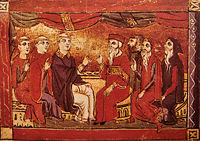
Alexandrian-rite Churches Coptic · Ethiopian West Syrian rite Churches Maronite · Syriac · Syro-Malankara Armenian-rite Churches Armenian Church Byzantine-rite Churches Albanian · Belarusian · Bulgarian Croatian · Greek · Hungarian Italo-Greek · Macedonian Melkite · Romanian · Russian Ruthenian · Slovak · Ukrainian East Syrian rite Churches Chaldean · Syro-Malabar  Catholicism Portal
Catholicism Portal- Dedication of the Church (Qudas-Edta)
Major feasts
Major feasts of the Church are,[25]
- Dukrana of our Father in Faith - Mar Thoma Sleeha Commemorated on July 3
- Marth Anna (Saint Alphonsa) - commemorated 28 July
- Blessed Chavara Kuriakose Elias - commemorated 3 January
- Servant of God Varghese Payapilly Palakkappilly – commemorated 5 October
- Blessed Euphrasia - commemorated 29 August
- Mar Bartholomeo Sleeha - commemorated 24 August
- Martha Simoni and her 7 Children - commemorated 21 August
- The Assumption of Marth Mariam - commemorated on 15 August
- Transfiguration - commemorated 6 August
- Mar Addai and Mar Mari - commemorated on the Second Friday of Qaita (Summer)
- The 12 Apostles of our Lord, Iso' Misiha - commemorated 19 July
- The 70 Apostles - commemorated 17 July
- Mar Quriaqos and mother Yolethe - commemorated 15 July
- Mar Aprem- Commemorated - commemorated 9 June
- Blessed Mariam Thresia - commemorated 8 June
- Holy Pentecost - commemorated on 31 May
- The Ascension of our Lord Jesus Christ - commemorated 21 May
- Mar Addai Sleeha - commemorated 10 May
- Mar Geevarghese Sahadha - commemorated 24 April
- New Sunday - commemorated 19 April
- All Saints Day - commemorated on the first Friday of the Season of Resurrection
- Entry of our Lord, Iso' Misiha into Jerusalem - Osana Sunday
- The Annunciation of Most Holy Mother - commemorated 25 March
- Remembrance of all Departed Faithful - commemorated on Last Friday of Denha
- The feast of Denha, the Epiphany - commemorated on 6 January
- The Nativity of our Lord, God and Saviour Iso M'siha - commemorated 25 December
- Mar Thoma Sliba - commemorated 18 December
- Immaculate Conception of Martha Mariam - commemorated 8 December
- Blessed Kunjachan - commemorated 16 October
Syro-Malabar major archiepiscopal curia
The curia[26] of the Syro-Malabar Church began to function in March 1993 at the archbishop’s house of Ernakulam-Angamaly. Later, on 27 May 1995, it was shifted to new premises at Mount St. Thomas near Kakkanad, Kochi. The newly constructed curial building was opened on 3 July 1998.
The administration of the Syro-Malabar Church has executive and judicial roles. The major archbishop, officials, various commissions, committees, and the permanent synod form the executive part. The permanent synod and other offices are formed in accordance with the CCEO. The officials include the chancellor, vice-chancellor, and other officers. Various commissions are appointed by the major archbishop: Liturgy, Pastoral care of the migrant and Evangelisation, Particular Law, Catechism, Ecumenism, Catholic Doctrine, Clergy and Institutes of Consecrated Life and Societies of Apostolic Life. The members of the commissions are ordinarily bishops. But there are also priests in different commissions. For judicial activities there is the major archiepiscopal ordinary tribunal formed in accordance with CCEO and it has a statutes and sufficient personnel with a president, as its head. The Major archiepiscopal curia functions in the curial building in Kerala, India. They have prepared the particular law for their Church and promulgated part by part in Synodal News, the official Bulletin of this Church. There are statutes for the permanent synod, for the superior and ordinary tribunals. Regarding economo, CCEO c. 122 § 2 is specific in the particular law, that the term of the office shall be five years and the same person shall not be appointed for more than two terms consecutively.[27]
Saints and Blesseds
 Kunjachan Beatified by Varkey Vithayathil, Major Archbishop of the Syro-Malabar Church on 30 April 2006 at Ramapuram.Participated by Papal Nuncio to India and President of CBCI.
Kunjachan Beatified by Varkey Vithayathil, Major Archbishop of the Syro-Malabar Church on 30 April 2006 at Ramapuram.Participated by Papal Nuncio to India and President of CBCI.
- St. Thomas
- Saint Alphonsa- Eparchy of Palai - canonized on 12 October 2008 by Pope Benedict XVI.
- Blessed Kuriakose Chavara - Archeparchy of Changanacherry – Founder of CMI - declared Blessed by Pope John Paul II at Kottayam, India on 8 February 1986.
- Blessed Mariam Thressia – Eparchy of Irinjalakuda - declared Blessed by Pope John Paul II in Rome on 9 April 2000.
- Blessed Thevarparampil Kunjachan – Eparchy of Palai - declared Blessed on 30 April 2006 by Mar Varkey Vithayathil, the Major Archbishop of the Syro-Malabar Church at Ramapuram, Palai as the delegate of Pope Benedict XVI.
- Blessed Euphrasia Eluvathingal – Eparchy of Irinjalakuda - declared Blessed on 3 December 2006 by Mar Varkey Vithayathil, the Archbishop of Thrissur at Ollur, Thrissur as the delegate of Pope Benedict XVI.
Eparchies
There are 29 eparchies. Five of them are Archeparchies at present – Ernakulam-Angamaly, Changanacherry, Trichur, Tellicherry and Kottayam. There are other 13 eparchies – Bhadravathi, Belthangady, Irinjalakuda, Kanjirapally, Kothamangalam, Idukki, Mananthavady, Mandya, Palai, Palghat, Ramanathapuram, Thamarassery and Thuckalay within the proper territory of the Major Archiepiscopal Church. There are 11 eparchies outside Kerala – Adilabad, Bijnor, Chanda, Gorakhpur, Jagdalpur, Kalyan, Rajkot, Sagar, Satna, Ujjain and the St. Thomas Eparchy of Chicago in the United States of America.[28]
Metropolitan archeparchies
The believers of this church are organized under 5 Archdioceses. All five are in Kerala.
- Metropolitan Archeparchy of Kottayam
- Metropolitan Archeparchy of Tellicherry
- Metropolitan Archeparchy of Thrissur
Eparchies
- Eparchy of Adilabad
- Eparchy of Belthangady
- Eparchy of Bhadravathi
- Eparchy of Bijnor
- Eparchy of Chanda
- Eparchy of Chicago
- Eparchy of Gorakhpur
- Eparchy of Idukki
- Eparchy of Irinjalakuda
- Eparchy of Jagadalpur
- Eparchy of Kalyan
- Eparchy of Kothamangalam
- Eparchy of Kanjirappally
- Eparchy of Mananthavady
- Eparchy of Mandya
- Eparchy of Palghat
- Eparchy of Palai
- Eparchy of Rajkot
- Eparchy of Ramanathapuram
- Eparchy of Sagar
- Eparchy of Satna
- Eparchy of Thuckalay
- Eparchy of Thamarassery
- Eparchy of Ujjain
Statistics
The number of Syro Malabar Church institutions and personnel[29] Institutions # Parishes 3200 Semi- Parishes 538 Missions 490 Institutes of Consecrated Life- Men & Women 53 Major & Minor Seminary 71 Regular,Technical & Other Colleges 503 Teachers’ Training Institutes 23 Higher Secandary & Primary Schools 2639 Kindergartens 1685 Non-formal & Adult Education 503 Special Schools 390 Health Care Institutions 700 Nurses Training Schools 44 Hospitals,Dispensaries & Health Centers 670 Specialized Health Care Centers,Incurables & Leprosy Care Centers 54 Old age Homes 211 Children’s Homes 185 Orphanages 230 Rehabilitation Centers and other institutions 1616 Total 13,805 Personnel Religious sisters 35000 Religious Brothers 6836 Diocesan and religious priests 9121 Bishops 39 Seminarians (men studying for the priesthood) 2607 Major Arch Bishop 1 Total 50,997 According to "Annuario Pontificio"- The Pontifical year Book for 2008, there are about 3,947,396 members in Syro Malabar Church.[28]
Within the proper territory
There are sixteen eparchies within the proper territory of the Syro Malabar Church.
Archeparchy of Ernakulam-Angamaly has 510,000 members with 347 parishes, 731 religious/secular priests, 632 male religious and 4935 female religious. Archeparchy of Trichur has 471,328 members with 195 parishes, 418 religious/secular priests, 358 male religious and 3315 female religious. Eparchy of Idukki has 400,000 members with 129 parishes, 119 religious/secular priests, 109 male religious and 1320 female religious.
Archeparchy of Changanacherry has 390,000 members with 266 parishes, 615 religious/secular priests, 534 male religious and 2705 female religious. Eparchy of Palai has 348,128 members with 169 parishes, 502 religious/secular priests, 127 male religious and 3312 female religious. Archeparchy of Tellicherry has 317,782 members with 222 parishes, 293 religious/secular priests, 263 male religious and 1664 female religious.. Eparchy of Irinjalakuda has 258,200 members with 128 parishes, 233 religious/secular priests, 132 male religious and 2350 female religious.
Eparchy of Kothamangalam has 217,420 members with 115 parishes, 242 religious/secular priests, 163 male religious and 2210 female religious. Eparchy of Kanjirapally has 192,000 members with 136 parishes, 314 religious/secular priests, 210 male religious and 1840 female religious. Archeparchy of Kottayam has 175,300 members with 149 parishes, 161 religious/secular priests, 107 male religious and 1233 female religious. Eparchy of Mananthavady has 170,100 members with 140 parishes, 413 religious/secular priests, 358 male religious and 1546 female religious. Eparchy of Thamarasserry has 129,600 members with 128 parishes, 247 religious/secular priests, 257 male religious and 1321 female religious.. Eparchy of Palghat has 68,004 members with 106 parishes, 167 religious/secular priests, 82 male religious and 1360 female religious.[28]
According to a study conducted, in Kerala about 30 percent of the Syro Malabar Church members lived in the erstwhile Cochin State. The remaining 70 percent lived in Travancore state. In the Travancore State, Meenachil Taluk had the largest proportion, followed by Changanaserry Taluk. Erstwhile Cochin State, Meenachil and Changanaserry together had 56 percent of the total Syro Malabar Population. Kottayam, Muvattupuzha, Kanjirappally, Thodupuzha, Kothamangalam, Cherthala, Mukundapuram (irinjalakkuda-chalakkudy), Wadakkancherry, Thrissur, North Parur, Alwaye, Kunnathunadu, Ambalapuzha, Kuttanad, Peerumedu, Nedumkandam and Devikulam etc. are the prominent taluks.[28]
Outside the proper territory
There are eleven eparchies outside the proper territory of the Syro Malabar Church.
Eparchy of Kalyan has 100,000 members with 106 parishes, 146 religious/secular priests, 105 male religious and 270 female religious. St. Thomas Syro-Malabar Catholic Diocese of Chicago, USA has 85,000 members with 11 parishes, 45 religious/secular priests, 13 male religious and 16 female religious. Eparchy of Chanda has 14,079 members with 5 parishes, 51 religious/secular priests, 182 male religious and 352 female religious. Eparchy of Adilabad, has 13,273 members with 25 parishes, 50 religious/secular priests, 41 male religious and 143 female religious. Eparchy of Rajkot has 12,850 members with 12 parishes, 140 religious/secular priests, 142 male religious and 421 female religious.[30]
Syro Malabar Religious Congregations
Main article: Syro Malabar Church Religious CongregationsThe Religious Congregations are divided in the Eastern Catholic Church Law (Code of Canons of the Oriental Churches – CCEO) as Monasteries, Hermitages, Orders, Congregations, Societies of Common Life in the Manner of Religious, Secular Institutes and Societies of Apostolic Life.
List of prominent Syro-Malabar Catholics in history
Main article: List of Prominent Syro-Malabar CatholicsMain article: St. Thomas ChristiansSee also
- Sisters of the Destitute
- Carmelites of Mary Immaculate
- Congregation of Saint Thérèse of Lisieux
- Christianity in India
- Syro-Malankara Catholic Church
- Syrian Malabar Nasrani
References
- ^ a b Official Website
- ^ Annuario Pontificio- The Pontifical year Book for 2008
- ^ www.nasranifoundation.org
- ^ Dr.Mathias Mundadan (1984), “History of Christianity in India ( CHAI) Volume I”
- ^ Dr.Mathias Mundadan (1984), “Indian Christians Search for Identity & Struggle for Autonomy”
- ^ Dr.Placid Podipara, (1938) “The Syrian Church of Malabar”
- ^ a b Dr.Placid Podipara (1972), “The Individuality of Malabar Church”
- ^ Placid Podipara (1972), “The Malabar Christians”
- ^ Placid Podipara (1979), “The Rise and Decline of the Indian Church of the Thomas Christians”
- ^ "Laurels for 'Thrissur model'". The Hindu. http://www.hindu.com/2011/05/21/stories/2011052156180700.htm. Retrieved 2011-10-31.
- ^ Britannica CD 97, S.V “Gama, Vasco da “
- ^ Mathias Mundadan, (1967), “The Arrival of Portuguese in India and Saint Thomas Christians under Mar Jacob”
- ^ Thekkedath, “History of Christianity in India”, Placid Podipara, “Thomaschristen” Vellian “Beginnings of Latinization of the Malabar Liturgy”
- ^ Thaliath, “The Synod of Diamper”
- ^ a b Dr. Xavier Koodapuzha, “Faith and Communion of the Indian Church of Saint Thomas”
- ^ Dr. Vellian “Beginnings of Latinization of the Malabar Liturgy”
- ^ a b Eugene Cardinal Tisserant, “ Eastern Christianity in India”
- ^ Catholic Encyclopedia profile of “St. Thomas Christians” - The Carmelite Period
- ^ a b Thekkedath, History of Christianity in India”
- ^ Fr. George Thalian: The Great Archbishop Mar Augustine Kandathil, D. D.: the Outline of a Vocation, Mar Louis Memorial Press, 1961. (Postscript) (PDF)
- ^ The Origin and Progress of the Syro-Malabar Hierarchy By Varkey J. Vithayathil
- ^ The Synod of Diamper and the Liturgy Jacob Vellian The Synod of Diamper Revisited, George Nedugatt, ed.
- ^ A Study of the Syro-Malabar Liturgy (George Vavanikunnel)
- ^ Pathikulangara, Varghese. Mar Thomma Margam (A New Catechism for the St. Thomas Christians of India), Kottayam: Denha Services, 2004
- ^ Syro Malabar Church-Major Feasts, The Nazrani.
- ^ Francis Eluvathingal, Patriarchal and Major Archiepiscopal Churches in the Eastern Catholic Legislations based on CCEO Canon 114–125
- ^ Francis Eluvathingal, Syro-Malabar Church Since the Eastern Code
- ^ a b c d Population Statistics, Syro Malabar Church.
- ^ At a Glance, Syro Malabar Church Website.
- ^ Annuario Pontificio, Year-2008
External material
References and bibliography
- ASSEMANI, Bibliotheca Orientalis (Rome, 1719–28); DE SOUZA.
- Orientale Conquistado (2 vols., Indian reprint, Examiner Press, Bombay).
- Gouvea, Jornada do Arcebispo Aleixo de Menezes quando foy as Serra do Malaubar (Coimbra, 1606).
- Fr. tr. De Glen, Histoire Orientale etc. (Brussels, 1609); DU JARRIC.
- Thesaurus rerum mirabilium in India Orient (3 vols., Cologne, 1615).
- India Orientalis Christiana (Rome, 1794).
- Mackenzie, Christianity in Tranvancore, with Census Report of 1901 (Trivandrum).Ed.& Reprinted, Prof. George Menachery in the Nazranies i.e. The Indian Church History Classics I, 1998.
- Medlycott, India and the Apostle St. Thomas (London, 1905).Ed.& Reprinted, Prof. George Menachery in the Nazranies i.e. The Indian Church History Classics I, 1998.
- Thalian, G. `The Great Archbishop Mar Augustine Kandathil, D. D.: the Outline of a Vocation', Mar Louis Memorial Press, 1961. (Postscript) (PDF)
- Menachery G (1973) The St. Thomas Christian Encyclopedia of India, Ed. George Menachery, B.N.K. Press, vol. 2, ISBN 81-87132-06-X, Lib. Cong. Cat. Card. No. 73-905568; B.N.K. Press – (has some 70 lengthy articles by different experts on the origins, development, history, culture... of these Christians, with some 300 odd photographs).
- Mundadan, A. Mathias. (1984) History of Christianity in India, vol.1, Bangalore, India: Church History Association of India.
- Podipara, Placid J. (1970) "The Thomas Christians". London: Darton, Longman and Tidd, 1970. (is a readable and exhaustive study of the St. Thomas Christians.)
- Philip, E.M. (1908) The Indian Christians of St. Thomas (1908; Changanassery: Mor Adai Study Center, 2002).
- Aprem, Mar. (1977) The Chaldaean Syrian Church in India. Trichur, Kerala, India: Mar Narsai, 1977.
- Menachery, Professor George. (2000) Kodungallur – The Cradle of Christianity In India, Thrissur: Marthoma Pontifical Shrine.
- Acts of St. Thomas (Syriac) MA. Bevan, London, 1897
- Tisserant, E. (1957) Eastern Christianity in India: A History of the Syro-Malabar Church from the Earliest Times to the Present Day. Trans. and ed. by E. R. Hambye. Westminster, MD: Newman Press.
- Michael Geddes, (1694) A Short History of the Church of Malabar together with the Synod of Diamper, London. Ed. Prof. George Menachery in the Nazranies i.e. The Indian Church History Classics I, 1998.
- Puthur, B. (ed.) (2002): The Life and Nature of the St Thomas Christian Church in the Pre-Diamper Period (Cochi, Kerala).
- T.K Velu Pillai, (1940) "The Travancore State Manual"; 4 volumes; Trivandrum
- Menachery G (ed); (1998) "The Indian Church History Classics", Vol. I, The Nazranies, Ollur, 1998. [ISBN 81-87133-05-8].
- Palackal, Joseph J. Syriac Chant Traditions in South India. Ph.d, Ethnomusicology, City University of New York, 2005.
- Joseph, T. K. The Malabar Christians and Their Ancient Documents. Trivandrum, India, 1929.
- Leslie Brown, (1956) The Indian Christians of St. Thomas. An Account of the Ancient Syrian Church of Malabar, Cambridge: Cambridge University Press 1956, 1982 (repr.)
- Thomas P. J; (1932) "Roman Trade Centres in Malabar", Kerala Society Papers, II.
- Marco Polo.(1298) LATHAM, R. (TRANSL.) "The Travels" Penguin Classics 1958
- Bjorn Landstrom (1964) "The Quest for India", Double day English Edition, Stockholm.
- Francis Eluvathingal (ed), Syro-Malabar Church Since the Eastern Code, Mary Matha Publications, Trichur, 2003.
- Francis Eluvathingal, "Patriarchal and Major Archiepiscopal Curia in the Eastern Catholic Legilations based on CCEO Canons 114–125" ORISI, Kottayam, 2009.
External links
- Syro-Malabar Church
- Archdiocese of Thrissur
- Archdiocese of Kottayam
- Archdiocese of Changanacherry
- Archdiocese of Ernakulam-Angamaly
- Archdiocese of Tellicherry
- The website for Synod of Diamper
- Syro malabar mission in Chennai
- Syro Malabar Church in Australia
- Syro Malabar Church in Qatar
Dioceses & Eparchies Syriac Christianity Churches (West Syrian) Churches (East Syrian) Historically: Church of the East - Related: Nestorianism
Presently: Ancient Church of the East · Assyrian Church of the East · Chaldean Catholic ChurchChurches (in India) Historically: Malankara Church
Presently:
Eastern Oriental: Chaldean Syrian Church (Assyrian Church of the East in India)
Orthodox: Jacobite Syrian Christian Church · Malankara Orthodox Syrian Church (Indian Orthodox Church)
Catholic: Syro-Malabar Catholic Church · Syro-Malankara Catholic Church
Reform: Malabar Independent Syrian Church · Malankara Mar Thoma Syrian Church · St. Thomas Evangelical ChurchLanguages Assyrian Neo-Aramaic · Bohtan Neo-Aramaic · Chaldean Neo-Aramaic · Garshuni · Hértevin · Koy Sanjaq Surat · Syriac · Mlahsô · Senaya · TuroyoNational identity Churches in India St. Thomas Christians Group Syriac Eastern Oriental: Chaldean Syrian Church (Assyrian Church of the East in India) · Syriac Orthodox: Jacobite Syrian Christian Church · Malankara Orthodox Syrian Church (Indian Orthodox Church) · Syriac Catholic: Syro-Malabar Catholic Church · Syro-Malankara Catholic Church · Syriac Reformed: Malabar Independent Syrian Church · Malankara Mar Thoma Syrian Church · Presbyterian Church of India · St. Thomas Evangelical Church · The Pentecostal Mission
Roman Catholic Group Catholic Church in India
Protestant Group Andhra Evangelical Lutheran Church · Church of North India · Church of South India · Garo Baptist Convention · Indian Pentecostal Church of God · North Bank Baptist Christian Association · Northern Evangelical Lutheran Church · Seventh-day Adventist · True Jesus Church in India · United Evangelical Lutheran Churches in India
Christianity by State Christianity in Arunachal Pradesh · Christianity in Assam · Christianity in Bihar · Christianity in Chhattisgarh · Christianity in Delhi · Christianity in Goa · Christianity in Jharkhand · Christianity in Karnataka · Christianity in Kerala · Christianity in Madhya Pradesh · Christianity in Maharashtra · Christianity in Manipur · Christianity in Orissa · Christianity in Punjab (India) · Christianity in Tamil Nadu · Christianity in Tripura · Christianity in Uttar Pradesh · Christianity in West Bengal
Related subjects Thomas the Apostle · Holy Apostolic Throne of St. Thomas · Saint Thomas Christians
Categories:- Syro-Malabar Catholic Church
- Eastern Catholicism
- Roman Catholic Church in India
- Christian denominations in India
Wikimedia Foundation. 2010.

